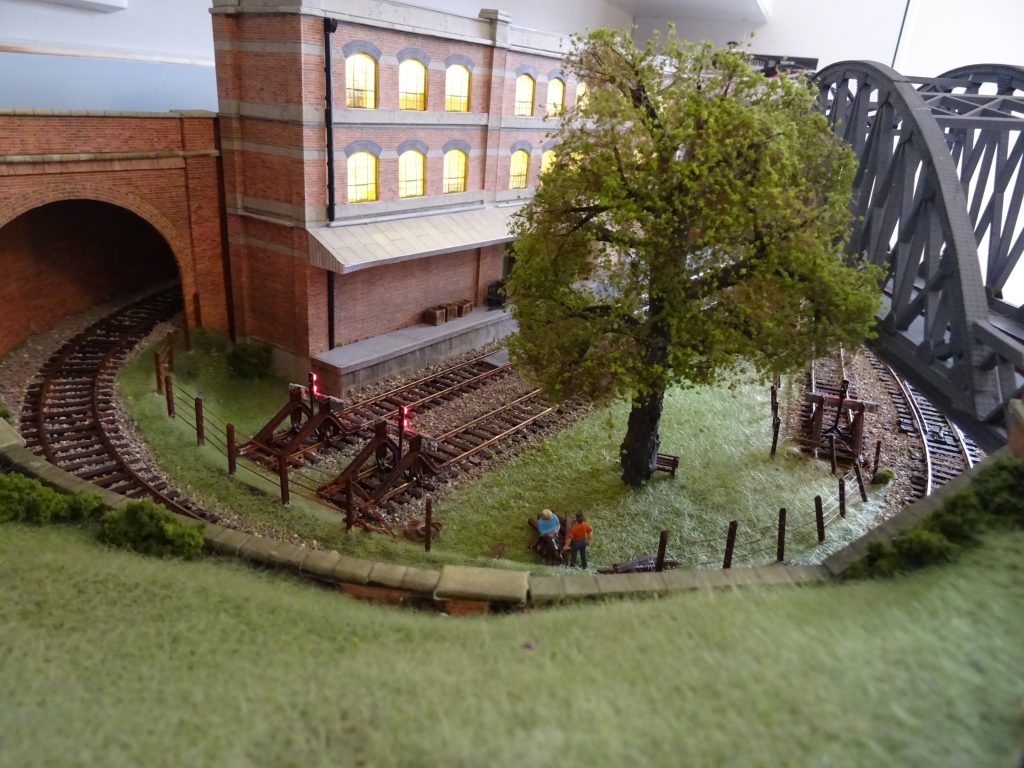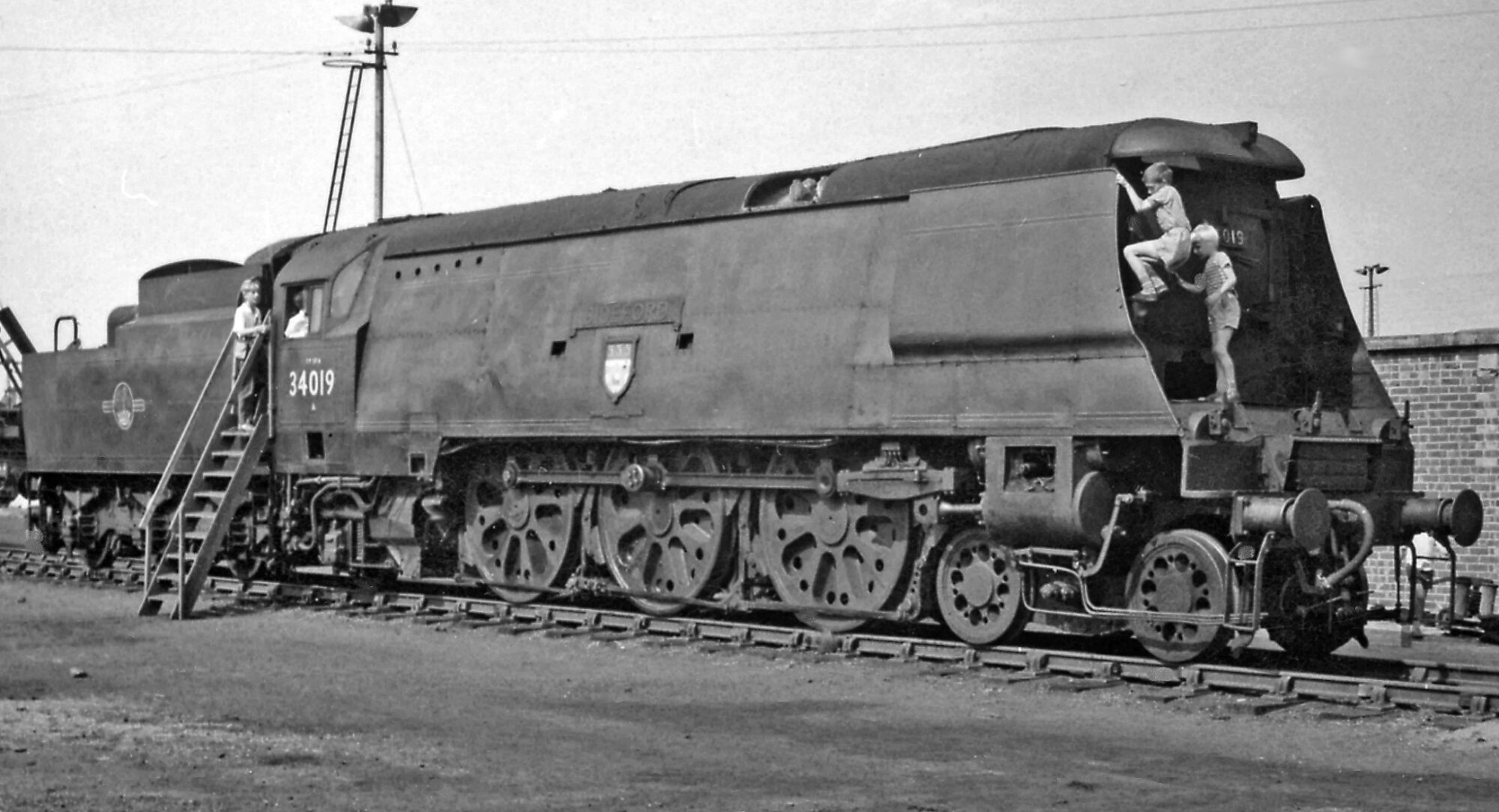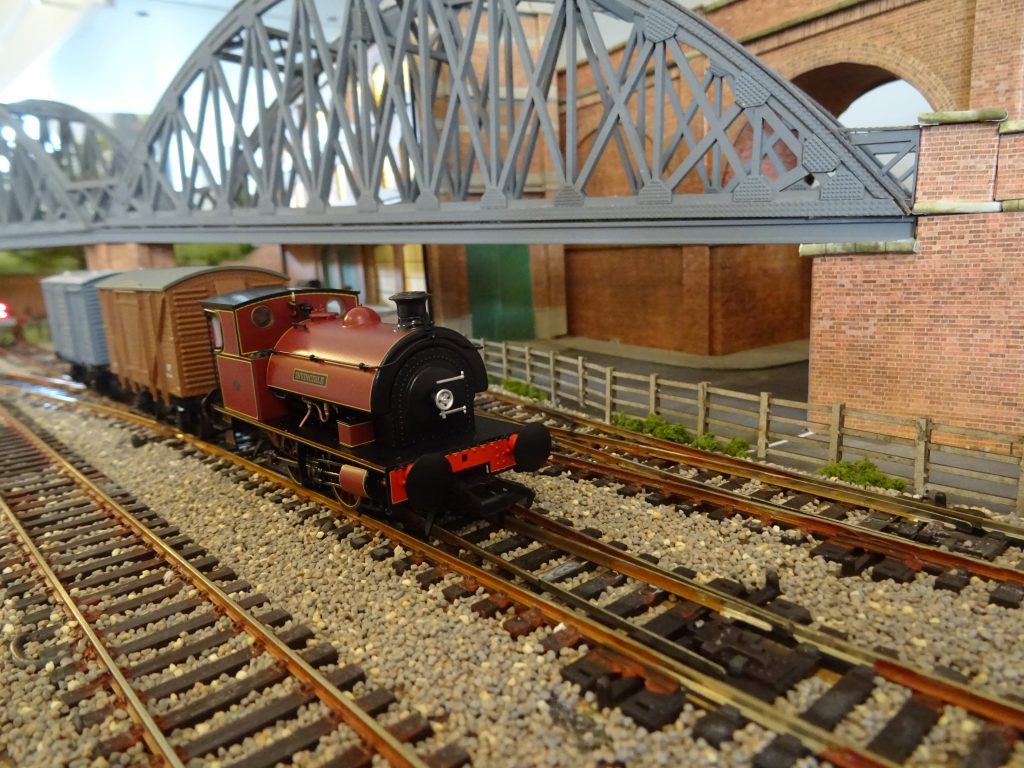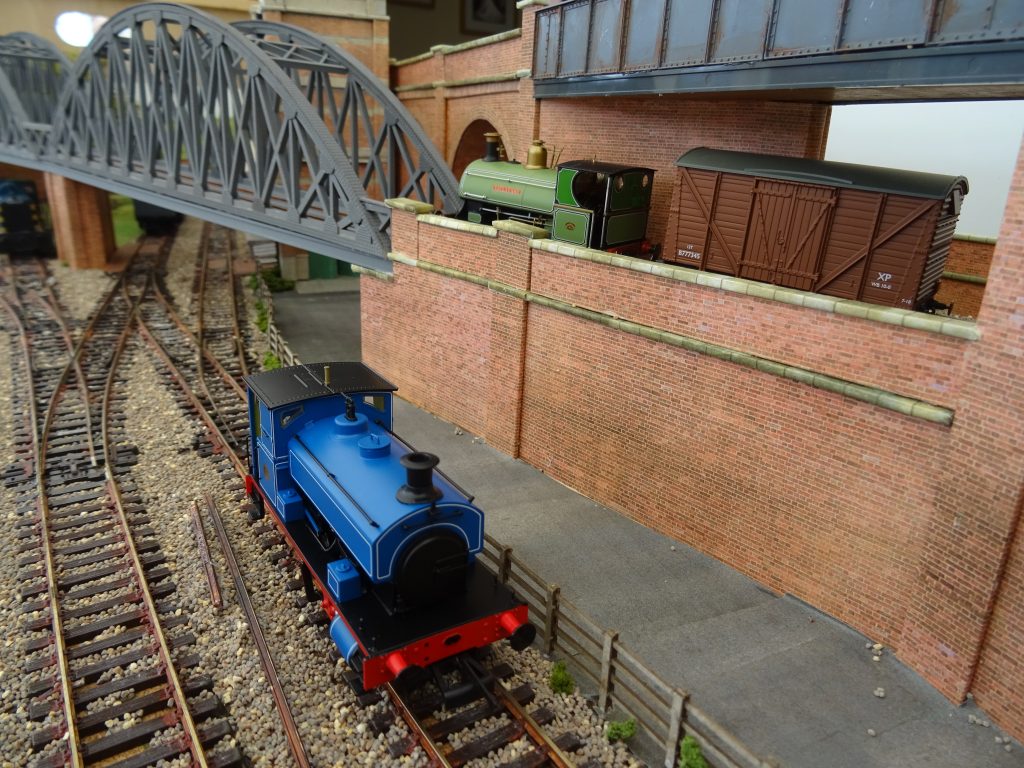It seemed like a straightforward request. “Could you please design and build a layout to go in a shop window?” “It will need to be OO gauge so that it can be seen, it will need to be a continuous run so that it can be switched on in the morning and off at night; perhaps a figure of eight track over a loop and some sidings”. I was content so far as I could imagine this on an 8ft x 4ft baseboard. “Oh, and by the way, the shop window is only 22 inches deep”. To which I replied, “You are kidding me!”

A site survey showed that although the widow was indeed 22 inches (56 cms) deep to get something in and out required some ‘wiggle room’, so the working space for the baseboard was set at 8ft 6in (2.6m) by 18in (46cm). This led to a maximum track radius of 8 inches (20cm). The first challenge was to see if anything in OO gauge would successfully negotiate such a tight curve. An old Hornby 0-4-0 diesel was used as a test locomotive and had no trouble running in either direction. An 0-6-0 was tried, but not surprisingly, it would not even sit on the track.

Control of the layout is by DCC to enable multiple locomotive operation, accessing all tracks. As the locomotives are 0-4-0s and have limited pickups, DCC also facilitates the use of ‘stay alives’, and these help with any track difficulties. There was no particular reason to use DCC for anything other than locomotive control, and so the points are controlled by Seep point motors with sprung centre off switches on the control panel fed from a Capacitor Discharge Unit (CDU).

- OO guage
- 8 ft 6 inches long x 18 inches deep
- Displayed on trestle mounts
- Requires access to one 13A socket, nearby. Less than 200W
- Transport by car
- 2 Operators (1 if accompanying other F&DMRC layouts)
- 1.5 hours to assemble and dismantle
- Insurance value £5000
- Private owner layout affiliated to Fareham and District Model Railway Club (F&DMRC)
- Contact Details: David Bolton, d.j.bolton@sky.com or via F&DMRC






